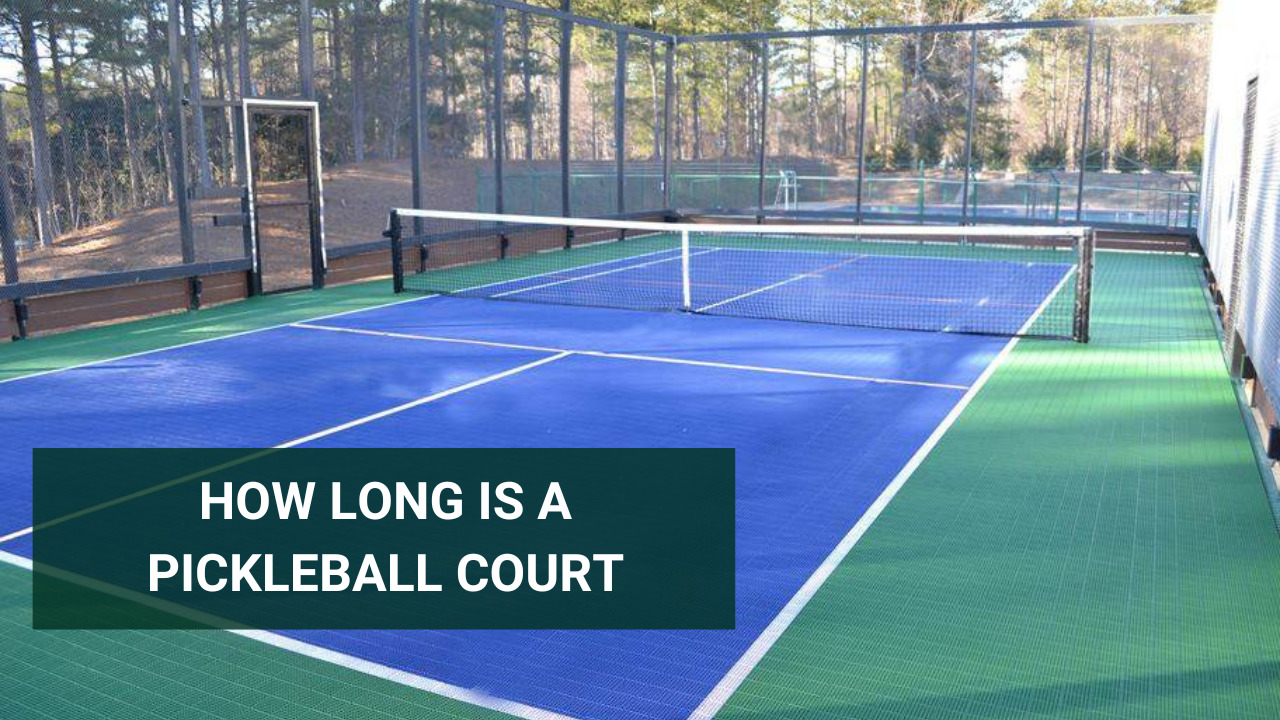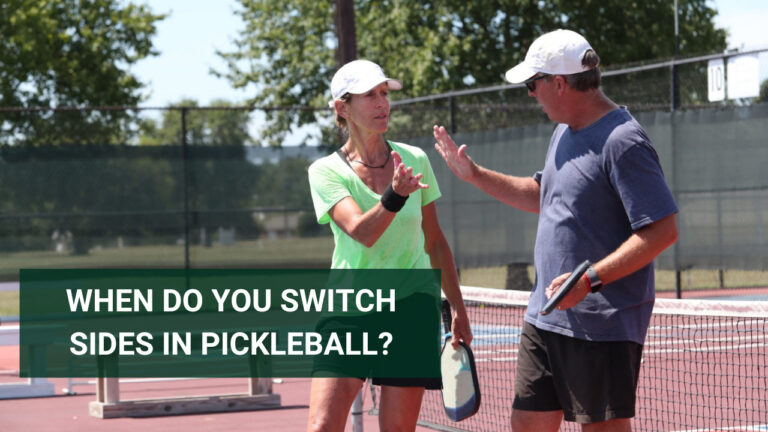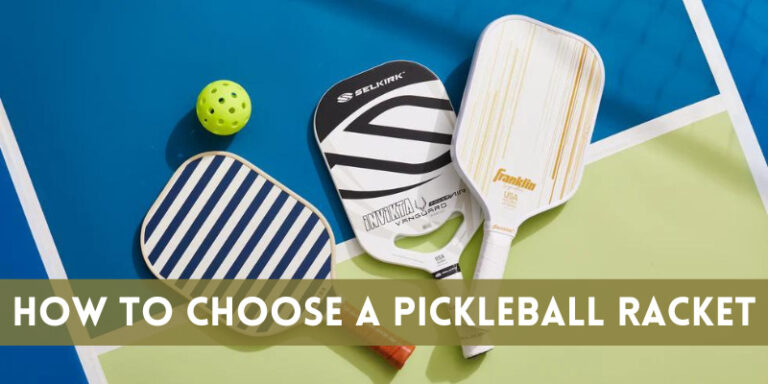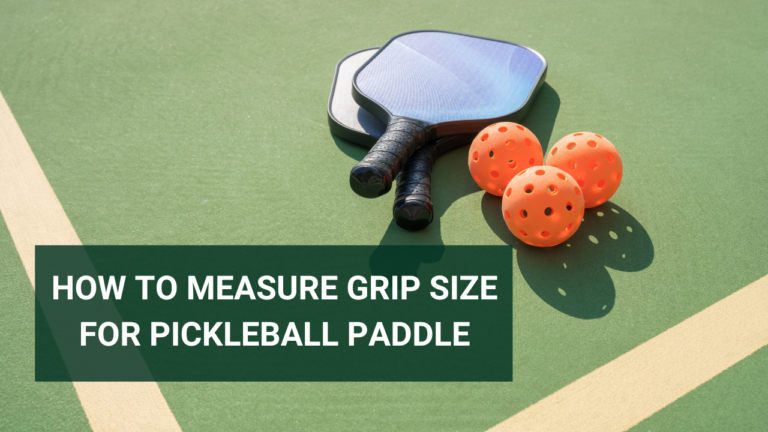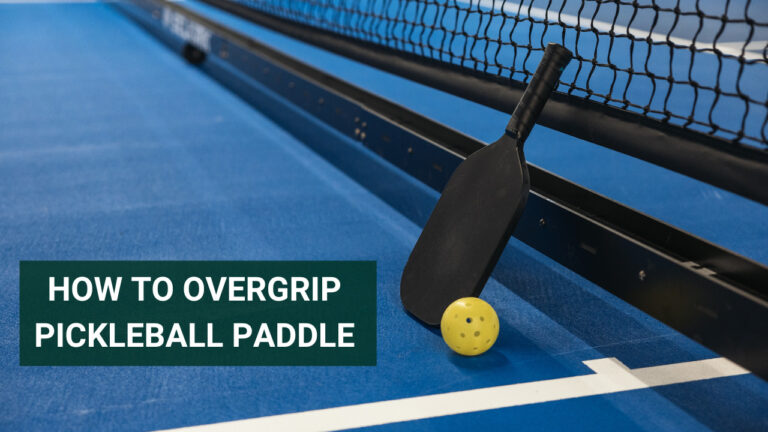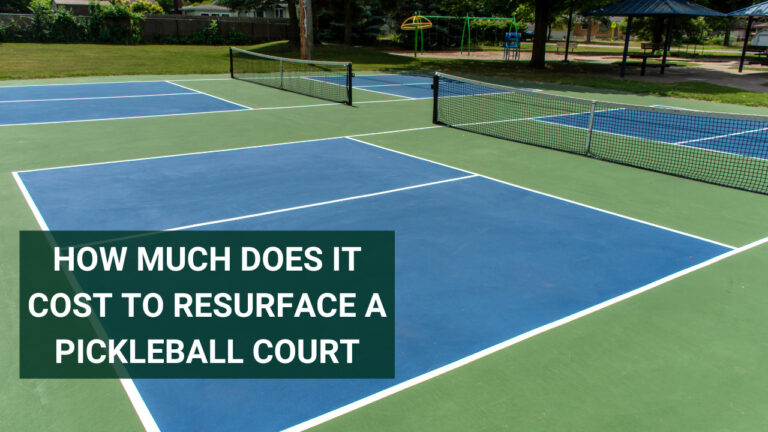How Long Is A Pickleball Court
Whether you’re new to the sport or a seasoned player, understanding the dimensions of a pickleball court is essential. After all, knowing the rules and regulations can make all the difference in your game.
A standard pickleball court measures 20 feet in width and 44 feet in length, with a net positioned at the center of the court, which is hung 36 inches high at the sidelines and 34 inches high at the center.
Here, we’ll explore everything you need to know about how long a pickleball court should be. From official dimensions to building your own court, we are here to help you.
How Long Is A Pickleball Court – The Right Size
When it comes to the length of a pickleball court, there are specific measurements that you should keep in mind.
Official Pickleball Court Dimensions:
- A standard pickleball court measures 20 feet in width and 44 feet in length for double palys.
- For singles play, the width remains the same at 20 feet but the length shortens to 34 feet.
- This is shorter than a tennis court, facilitating faster-paced gameplay.
Court Markings:
- The baseline marks the back boundary of the playing area.
- Two side baselines define the width of the court.
- Non-volley zone lines are located seven feet from each side of the net, restricting players from hitting volleys within this area.
Strategic Importance:
- Understanding these dimensions helps players strategize their shots and positioning on the court.
- It enables anticipation of opponents’ shots and effective responses.
Comparison to Tennis Courts:
- Highlight that pickleball courts are smaller in size compared to tennis courts, making them more accessible and dynamic for players.
So now that we know how long an official pickleball court is let’s explore how you can build your own if hitting up local courts isn’t convenient for you.
How to Build Your Own Pickleball Court
Building your own pickleball court is a great way to enjoy the sport right in your own backyard.
So how do you go about building your own pickleball court?
Benefits of Building Your Own Pickleball Court:
- Enjoy the sport in your own backyard.
- Play at your convenience without waiting for a local facility.
Steps to Build Your Own Pickleball Court:
Select a Suitable Location:
- Ensure enough space for the official court dimensions (20 feet wide and 44 feet long).
- Allow for extra perimeter space for safety.
Prepare the Ground Surface:
- Ensure the area is level and well-drained.
- Surface options include concrete, asphalt, compacted gravel, or turf.
Mark Court Boundaries:
- Use chalk or paint for hard surfaces (concrete or asphalt).
- On grass or turf, create temporary lines with tape or stakes.
Install Necessary Fencing:
- Prevent stray balls from leaving the court.
- Ensure the court is properly enclosed.
Consider Additional Amenities:
- Add seating areas and lighting fixtures for added comfort and visibility.
Effort and Investment:
- Building a pickleball court may require initial effort and investment.
- The benefits of having your court, in the long run, make it worth the effort.
Important Considerations:
- Emphasize that planning is essential, taking into account space availability and budget constraints before starting the construction process.
Building your own pickleball court can be a fulfilling project that allows you to enjoy the sport with friends and family right in your backyard.
The Cost of Building a Pickleball Court
Building a pickleball court can be a fun and rewarding project, but it’s important to consider the cost before diving in. The total cost depends on factors like size, materials, and additional features.
Primary Expenses:
- Playing surface construction: Asphalt (affordable but higher maintenance) or concrete (durable but higher upfront cost).
- Court line marking: Permanent paint or cost-effective options like temporary tape or chalk.
Other Costs to Factor In:
- Safety fencing around the court.
- Lighting systems for nighttime play.
- Nets and poles for gameplay.
Cost Variations:
- Expenses may differ by location and whether you opt for professional help or DIY.
- Research local regulations, permits, and guidelines.
Benefits of DIY Court:
- Customization and convenience.
- Informed decisions on materials, line marking, and features help manage costs effectively.
By considering factors like surface material choice, line marking options, additional features required,and doing thorough research beforehand,you can make informed decisions about how much you’re willing to invest in this exciting sport!
How Large Should Pickleball Out-Of-Bounds Zones Be?
When it comes to playing pickleball, having clearly defined out-of-bounds zones is essential for maintaining the integrity of the game.
- The size of these zones can vary depending on the level of play and available space. However, there are some general guidelines that can help ensure a fair and enjoyable experience for everyone involved.
- Ideally, out-of-bounds zones should be at least 10 feet wide along each sideline of the court. This provides enough room for players to safely move around without risking stepping out of bounds during intense rallies.
- In terms of depth, most experts recommend a minimum distance of 7 feet behind each baseline. This allows players ample room to retrieve balls without feeling cramped or restricted in their movements.
- It’s worth noting that while these dimensions are commonly used, they may not be suitable for every situation. For example, if you’re playing on a smaller court or have limited space available, you may need to adjust the size of your out-of-bounds zones accordingly.
- The goal is to create an environment where players can fully enjoy the game while minimizing any potential hazards or conflicts related to boundary lines.
By following these guidelines and considering your specific circumstances, you can ensure that your pickleball court is set up properly and ready for action!
How To Draw Temporary Pickleball Lines
One of the great things about pickleball is that you can play it almost anywhere! Whether you’re at a park, in your backyard, or even indoors, all you need is a temporary pickleball court. Drawing temporary pickleball lines is quick and easy, and it allows you to enjoy the game wherever you go.
- Gather some equipment – measuring tape, chalk or masking tape, and a straight edge. You’ll want to measure out the official dimensions for a pickleball court: 20 feet wide by 44 feet long. Use the measuring tape to mark these dimensions on the ground.
- Use your straight edge (a piece of wood or string works well) to ensure your lines are straight. Starting with one side of the court, draw a line along each lengthwise boundary using chalk or masking tape. Repeat this process for both widthwise boundaries.
- Once you have all four boundaries drawn, add in the non-volley zone lines (also known as kitchen lines). These should be drawn parallel to each sideline and located 7 feet from the net on either side.
- With your temporary pickleball lines complete, grab your paddles and balls and get ready to play! Just remember to remove any debris or obstacles from the court before starting.
Drawing temporary pickleball lines is an affordable way to enjoy this fun sport without investing in permanent courts.
Conclusion
The regulation pickleball court is 44 feet long, ensuring fair play. Following to official dimensions and out-of-bounds zones during construction is crucial. Consider location, materials, and budget, with costs varying based on DIY or professional approaches. Quality materials enhance durability.
For temporary play, use removable pickleball court lines. Understand the court’s correct length, factor in cost and boundaries, and create an enjoyable pickleball environment. Grab your paddles and enjoy!
FAQs
How many feet is a pickleball court?
A pickleball court is 44 feet long.
Are there different-sized pickleball courts?
Yes, there are different sizes of pickleball courts, but the standard size is 44 feet long by 20 feet wide for doubles play and 22 feet wide for singles play.
What size is a small pickleball court?
A small pickleball court, used for singles play, is 44 feet long by 22 feet wide.
Can just 2 play pickleball?
Yes, just 2 players can play pickleball, either in a singles match or as part of a doubles team.
Can pickleball be played 1v1?
Yes, pickleball can be played in a 1v1 format, which is called singles play.
Why do they call the game pickleball?
The game is named after the inventor’s dog, Pickles, who was known for chasing after stray balls.
